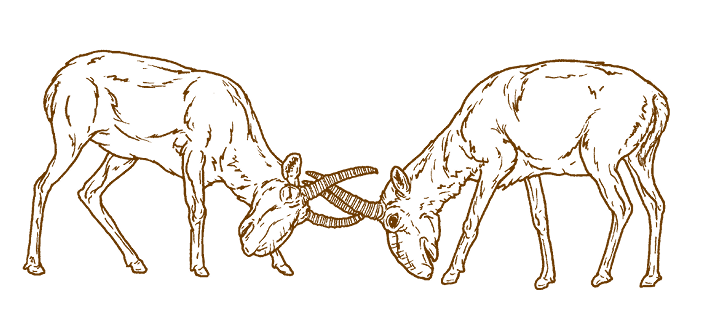
Saiga Antelope
Saiga tatarica
(sigh-ga tat-a-reek-a)

This little antelope is one of the strangest, most fantastical-looking animals on earth. At first glance it may even be hard to believe they’re real! Their noses seem almost alien, like something from another world.
The saiga’s long snout helps the antelopes to breathe more easily and to regulate their body temperature in the extreme climates they live in. The larger their nose is, the more efficiently it can cool them down in the summer and warm them up in the winter. It also means they have a superb sense of smell!
They’re only about the size of a goat, standing around 2 feet (70 cm) tall at shoulder height. Males weigh approximately 88 pounds (40 kg) and females weigh 66 pounds (30 kg). Saiga antelope are timid animals that like to live in small herds when they’re not migrating.

Where They Live
Saiga are very rare these days, but if you want to find one, you’ll have to travel to Mongolia, Russia, or Kazakhstan. Their population is dwindling fast, and in some places they haven’t been seen in 40 years. Every year in November, they migrate long distances in search of areas with enough low-lying trees and plants to eat all winter. More than 10,000 saiga will travel together on these taxing journeys. They prefer wide open spaces to dense, overgrown habitat, where it would be harder for them to escape from predators.
What They Eat
Saiga antelope usually eat grass, shrubs, lichen, and herbs. They can also eat some plants that are poisonous to other animals without getting sick.
Conservation Status
Critically Endangered

In the past 40 years, more than a million saiga have died, leaving only around 50,000 left in the wild—a catastrophic loss. They once lived throughout China and Ukraine, but no longer. Humans hunt male saiga in large numbers for their highly prized meat and horns. This means there are fewer males for the females to breed with, which means fewer babies are born each year.
The World Wildlife Fund has listed these critically endangered animals as a priority species to try to prevent them from becoming entirely extinct.
Fun Facts
